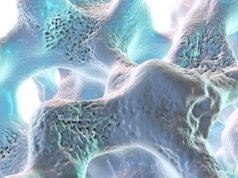The 103rd Scientific Assembly and Annual Meeting of the Radiological Society of North America
The annual meeting of the Radiological Society of North America was held from Nov. 26 to Dec. 1 in Chicago and attracted approximately 55,000 participants from around the world, including radiologists, radiation oncologists, physicists in medicine, radiologic technologists, and other health care professionals. The conference featured scientific papers covering the newest trends in radiological research, engaging educational sessions, and an extensive exhibit hall.
In one study, Matthew Sherwood, Ph.D., of Wright State University in Dayton, Ohio, and colleagues used functional magnetic resonance imaging (fMRI) signals and neurofeedback training to address the impact of tinnitus.
“Our results indicate the potential of this therapy,” Sherwood said. “Currently, behavioral therapies have shown promise in treating the tinnitus affect. We believe our technique can be transitioned to something similar to these behavioral therapies with a few key differences driven by our brain-first focus and the combination of auditory hyperactivity and attentional processes.”
In another study, Youjin Zhao, M.D., Ph.D., of Sichuan University in Chengdu, China, and colleagues utilized MRI to assess patterns of structural abnormalities in the brains of people with depression and social anxiety. The team acquired and analyzed high-resolution images from major depressive disorder (MDD) patients, social anxiety disorder (SAD) patients, and healthy controls.
“Our findings could only provide preliminary evidence of common and specific gray matter changes in MDD and SAD patients. Further work in larger samples is required to draw firm conclusions,” Zhao said. “However, these identified regions may serve as candidate regions of interest for non-drug therapy studies, such as electroconvulsive therapy, deep brain stimulation, and transcranial magnetic stimulation.”
Melissa Meyer, M.D., of the University Hospital Mannheim and Heidelberg University in Germany, and colleagues found that individuals who experience migraines have significantly higher sodium concentrations in their cerebrospinal fluid than individuals not affected by migraines.
The investigators evaluated the use of cerebral sodium MRI to better understand migraine pathology. They measured sodium concentrations of migraine patients as compared to healthy controls. The researchers observed no statistical differences between migraine sufferers and healthy controls for sodium concentrations in the gray and white matter, brain stem, or cerebellum, but did identify significant differences in the cerebrospinal fluid.
“These findings might facilitate the challenging diagnosis of a migraine,” Meyer said in a statement. “As this was an exploratory study, we plan to examine more patients, preferably during or shortly after a migraine attack, for further validation.”
RSNA: Weight Loss Via Exercise Alone Not Protective for Knees
THURSDAY, Nov. 30, 2017 (HealthDay News) — For obese and overweight individuals, weight loss through diet and diet and exercise (but not exercise alone) is associated with slowing of cartilage degeneration, according to a study presented at the annual meeting of the Radiological Society of North America, held from Nov. 26 to Dec. 1 in Chicago.
RSNA: IV-SUD Complications Prevalent in Emergency Radiology
THURSDAY, Nov. 30, 2017 (HealthDay News) — Patients presenting to emergency radiology (ER) frequently have intravenous substance use disorder (IV-SUD) complications, according to a study presented at the annual meeting of the Radiological Society of North America, held from Nov. 26 to Dec. 1 in Chicago.
RSNA: Pulsed Radiofrequency Alleviates Low Back Pain
WEDNESDAY, Nov. 29, 2017 (HealthDay News) — Computed tomography (CT)-guided pulsed radiofrequency is beneficial for patients with acute or subacute neuroradicular pain from lumbar disc herniation, according to a study presented at the annual meeting of the Radiological Society of North America, held from Nov. 26 to Dec. 1 in Chicago.
RSNA: BMI Linked to Detection of Larger Breast Tumors
TUESDAY, Nov. 21, 2017 (HealthDay News) — Body mass index (BMI) is associated with detection of large breast tumors (>2 cm) among screen-detected and interval cancers, according to a study scheduled to be presented at the annual meeting of the Radiological Society of North America, held from Nov. 26 to Dec. 1 in Chicago.
Copyright © 2017 HealthDay. All rights reserved.







